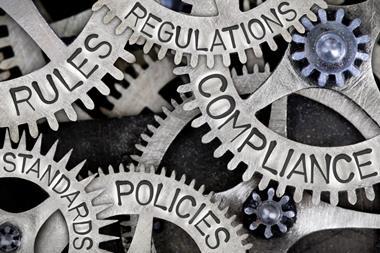As Coronavirus sweeps the globe, StrategicRISK examines how European businesses are dealing with the crisis and what steps risk managers can take to safeguard their organisations and employees
Coronavirus has swept the globe and the World Health Organisation has declared that the outbreak now has “pandemic potential”. Globally, more than 80,000 people have been infected and nearly 2,800 of those have died.
As well as the devastating human cost, Coronavirus has also had a significant business impact. Last Friday, stock markets plummeted as investors feared that travel restrictions could further prevent business activity. Supply chains have been upended and former US Federal Reserve Chair Janet Yellen has said that business interruption could tip the US into a recession.

For risk managers there are several key issues to consider. As well as staff getting infected, other threats include reputational crises if business travellers become unwell, disrupted logistics, closure of factories or other business locations, decline in consumer spending and even the threat of longer-term economic depression.
With so many conflicting risks, it can be hard to see the best way forward, particularly when some may be in direct conflict with others. For instance, how do you balance the risks of low productivity with the danger of failing to quarantine staff.
Paul Denton, MBA a consultant at SRMC, LLC says: “As far as risks to a business enterprise from Coronavirus or any other community health issue one would have to look at the nature of the business. Is there international travel involved, if so from what countries? Is there a mass gathering of people? Is the business facility open to the public or is it restricted to employees? Are communicable disease, community or cleaning protocols a concern? Is the facility outdoors or in an enclosed space such as an office building, school or church?
“The first critical step in my view is preparedness. Well-prepared managers will already have business continuity plans that include policies and procedures for pandemic. The logical step is to think broadly and apply the plan for any sickness, disease or illness. The foremost priority is the safety and well-being of people: staff, customers and visitors.”
People problems
By far the greatest risk with coronavirus is its impact on people. Staff may fall ill, become anxious, or fail to show up to work due to safety concerns, caring for sick family members or unforeseen general travel restrictions. Governments are regularly changing quarantine and self-isolation guidelines and businesses need to keep track of these.
In many European countries there is a legal expectation that workplaces will take reasonable steps to safeguard their staff. For office-based workers, working from home is an obvious precaution that can help keep employees safe and stop the spread of the virus.
”Businesses should review their Business Continuity Plans and check whether they include the sort of recovery options that will be needed for this type of crisis.”
Martha McKinley, Employment Law Solicitor and Senior Associate at Stephensons Solicitors LLP, said: “If home working is an option then this should be considered if a member of staff is being quarantined but is still able to work, or is a vulnerable employee, for example if they are pregnant or at a higher risk of infection.
“An employer may want to consider its obligation to other members of staff and agree to pay quarantined employees to reduce the risk of a virus spreading.”
Mercer’s James Crask, added: “Businesses should review their Business Continuity Plans and check whether they include the sort of recovery options that will be needed for this type of crisis. For some businesses it may mean more home working, increased teleconferencing and split site working for critical teams. Businesses should ask themselves, “Do your systems and processes allow for this change in working practices?”
Business line or factory closures
Of course, not all companies can introduce or extend home working. Care workers, for instance, rely on face-to-face working to fulfil their roles. Equally, manufacturing plants require workers on the ground to run machinery.
McKinley said: “In some industries there will be a ‘lay off’ clause within an employment contract, which is a provision designed to deal with a situation in which an employer cannot provide an employee with work, for example, a factory may be forced to close.
“These clauses are designed to deal with temporary situations and can support employees while they are ‘laid off’ without pay, however if a contract does not contain this arrangement, and there is no corresponding union agreement, then an employer will still have to pay staff even if a business cannot provide work.”
”It’s a very good public facing move. This shows the public that the airlines are willing to put the common good over profits”
There may also be unexpected benefits to closing down operations. For example, as coronavirus continues to spread across China and into other countries, a number of airlines are choosing to suspend flights to China.
Ronn Torossian, CEO of 5WPR and a crisis expert veteran said: “While this was surely a tough call for airlines to make, it’s a very good public facing move. This shows the public that the airlines are willing to put the common good over profits, and in an industry that generally is not beloved by the public, any goodwill helps. Although profits may take a dip in the short term, the boost in public trust will serve the airlines in the long term.”
Travel risk
European businesses have already been feeling the effects of the international travel restrictions on their business travellers. And as Coronavirus has spread here, organisations have also had to think about local travel disruption for domestic workers
Charline Gelin, director of security solutions, International SOS said: “Wherever [the virus] appears, organisations may find that their employees at risk of disruption. It is critical that organisations and their people have a heightened awareness of the developing situation, with access to information and flexibility to change plans.
“From a travel perspective, we are recommending that organisations make sure their travel security policy is updated to reflect current travel restrictions and enforcing additional travel approval or even a travel ban where necessary.
“Traveller tracking is a useful tool for managers to identify their exposure, provide information to their employees on potential travel restriction and ensure they are able to communicate prevention recommendations to travellers.”
To protect the workforce, International SOS is advising organisations to take at least the following actions:
- Educate employees on the symptoms and precautionary hygiene measures and ensure people have access to the most up to date information.
- Advise employees to seek medical attention if they feel unwell and to not travel.
- Stand up crisis management teams and meet regularly.
- Review travel management plans, potential for travel disruption, risk of imposed quarantine.
- Review pandemic plans including how to manage travellers from Wuhan / affected areas.
- Review protective equipment, cleaning protocols.
- Allow additional time for travel and flexibility in itineraries
Supply chain interruption
Businesses are already seeing the negative effects of supply chain interruption and this is only likely to get worse as the outbreak continues to spread. The ‘just in time’ nature of many businesses’ supply strategies mean many organisations have little in-built resilience to absorb delays or disruptions.
For instance, organisations that use personal protective equipment (PPE) are at significant risk. Any industry relying heavily on disposable workwear will be impacted. For example, the impact on the Food Industry could be catastrophic.
Steve Green, a director at Anthony Jones says: “The key question is: where are businesses going to source PPE?… Currently all portside goods are being returned to factories, so there is nothing coming from China which could last for months. As a result, there is zero stock available now globally on respiratory equipment and supplies on coveralls are virtually exhausted. Try sourcing hand sanitiser right now, for example.
“Supply chains are slowing down in China as manufacturing is not at its full capacity”
Of course, it’s not just protective clothing that is causing supply chain issues. The impact on some organisations could be severe, particularly those in manufacturing and the automotive sector.
Dr. Kerstin Braun, President of Stenn Group said: “US imports are being held hostage at the ports when coming in via ship. Vessels need to wait 14 days until they are able to access the port and offload… The virus could topple China’s dominant manufacturing position and companies will need to diversify their supply chains.
“Supply chains are slowing down in China as manufacturing is not at its full capacity. Factories are opening back up but with only about 50 per cent of the workforce. Given the automotive industry is already struggling to adopt to the lower and changing demand for cars, particularly as more people are opting for electronic vehicles, it is likely the automotive industry could be soon hit.”
Crask added: “Organisations should be contacting their key suppliers to understand their plans and expectations for how they might be disrupted. It’s also critical that they ask about their supplier’s key suppliers.”
Practical steps to coming up with a Coronavirus business strategy.
Dr Keith Smith, RiskCovered, shares his thoughts on some of the practical steps that risk managers can take to make sure they are prepared for the spread of Coronavirus and that their business continuity plans are robust enough to deal with the potential crisis
- When knowledge is weak, it is key to secure sources of valid information. Go to the WHO website, NHS, places where the source has credibility and are regularly updated
- Contextualise the information as it relates to your organisation. Not all information is relevant for all businesses. Look for upsides, do not just see downside threats.
- Recognise there are two groups to consider here. Customers and the people who work in your business. Strategies are required for both groups.
- Create scenarios to pull the information you have and collect it into stories that people can follow and make rational judgements from. RM’s should consider building at least three scenarios, but may use more to explore optional response strategies.
- First scenario is that the situation gets a little worse, but tails off over the next six weeks. Collect information on such a scenario and work out decision points and responses.
- Second scenario is that the situation gets a lot worse in Europe, but not an extreme scenario. Must be plausible and based on facts that can be established such as connections with already infected locations. So if there are major trade links between the region in Italy and say the motor trade around Stuttgart, then the scenario may consider the situation where Stuttgart gets infected.
- Third scenario is still a plausible scenario, but an extreme situation where things generally don’t go well. Early vaccines are not as effective as hoped, people do not self isolate, new transmission channels are found etc.
For each scenario, collect information and identify key risk indicators and things which would require a change in response. Things that can give early warning on how [the situation] may unfold. Scenarios are good communication tools for Risk Managers and good for building structure around situations like this. - In the business, use crisis management technics. Communicate frequently and ensure there is one version of the truth.
- Implement simple low-cost procedures that reassure people in your business. Do not let the soap run out in the toilets! Implement work at home if possible. Reduce travel by using webex type systems, etc. Make cleaning obvious and visible.
- Update plans regularly. A big decision-making trap is to stick with a decision long after it has ceased to be the right decision
- Think about the post crisis world. What would have changed permanently?




















No comments yet